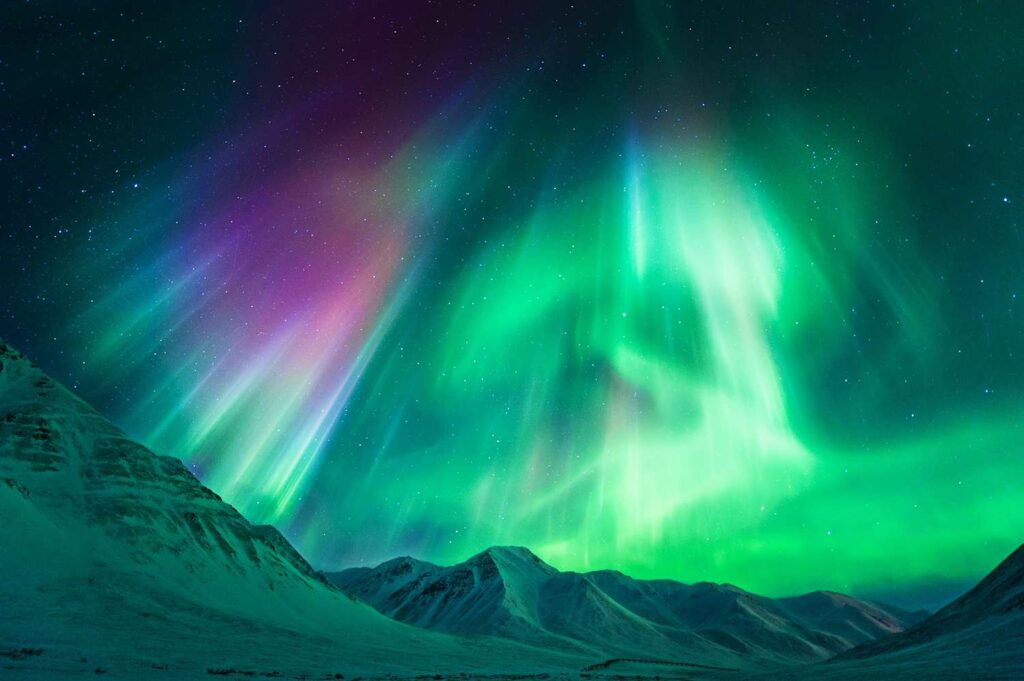If you’re in a few lucky states tonight, look up at the sky for a colorful show.
The aurora borealis, a natural phenomenon that fills like the sky with undulating colorful lights, should be visible on Aug. 7 and Aug. 8 in 18 states, weather and dark skies permitting. According to the National Oceanic and Atmospheric Administration (NOAA), geomagnetic storm conditions could be sparked by an incoming coronal mass ejection (CME), making auroras in the night sky.
“A CME and Coronal Hole High Speed Stream (CHH SS) are anticipated to affect Earth with elevated geomagnetic response and dependent upon the orientation of the embedded magnetic field, potential exists for moderate storm levels,” the NOAA said in a statement on their website. “Combined effects from a coronal mass ejection (CME) which lifted off the Sun on 05 Aug and a coronal hole high speed stream (CH HSS) are expected to cause geomagnetic storming on 08-09 Aug. A G2 (Moderate) watch was issued for 08 Aug with the onset of activity. A G1 (Minor) watch was issued for 09 Aug.”
Even a minor disruption caused by the CME could trigger the aurora borealis. The exact timing of the disruption is unclear, so the potential aurora borealis could be visible any time between 11pm on Aug. 7 through Aug. 9. Tonight might be the best opportunity for spotting the aurora for the lucky residents of the affected states.
Northernmost states are most likely to have a chance at spotting the aurora. The 18 states that might have a view of the colorful sky are Alaska, Montana, North Dakota, Minnesota, Wisconsin, Michigan, Maine, South Dakota, Vermont, New Hampshire, Idaho, Washington, Oregon, New York, Wyoming, Iowa, Nebraska, and Illinois.
Though solar storms are unpredictable, it’s worth going out tonight and looking up. For residents of those states, the best way to maximize the chances of seeing the aurora borealis is to find a north-facing vantage point that lets you see the horizon clearly, and ideally is as far away from light pollution as it is possible to be. The best time for aurora spotting is 2 am, when the sky is likely to be the darkest, but since the arrival of the solar storm is unpredictable, it’s recommended to look throughout the night for the event.
Downloading an app that tracks aurora can also be helpful for sky spotters who would prefer not to spend the whole night outside.
https://www.travelandleisure.com/northern-lights-visible-across-almost-half-of-usa-tonight-rare-solar-storm-11786658


